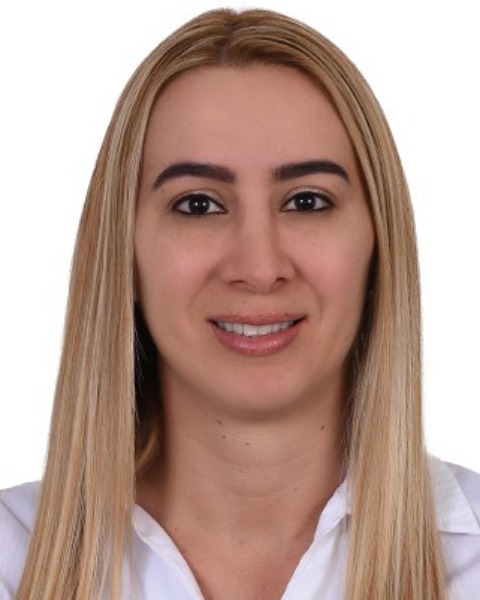Poster Session 3
(728) Should transvaginal cervical length surveillance be conducted after cerclage placement to predict spontaneous preterm birth?

Dahiana M. Gallo, MD, PhD (she/her/hers)
Program Director of Research and Education
St. Lukes University Health Network
Easton, PA, United States
Rupsa C. Boelig, MD, MS
Assistant Professor
Sidney Kimmel Medical College, Thomas Jefferson University
Philadelphia, Pennsylvania, United States- JM
Julio Mateus Nino, MD, PhD
Atrium Health, Wake Forest University School of Medicine
Charlotte, North Carolina, United States 
Vincenzo Berghella, MD (he/him/his)
Professor, Director
Sidney Kimmel Medical College of Thomas Jefferson University
Philadelphia, Pennsylvania, United States
Leonardo Pereira, MD
Professor, Division Director Maternal Fetal Medicine
Oregon Health & Science University
Portland, Oregon, United States
Catalina M. Valencia, MD (she/her/hers)
Head of Maternal Fetal Medicine Unit
Clinica del Prado, Unidad de Medicina Materno Fetal, Medellín, Colombia
Medellin, Antioquia, Colombia
Joanne N. Quiñones, MD, MSCE (she/her/hers)
Program Director, Maternal Fetal Medicine Fellowship; VC Research, Dept OBGYN
Lehigh Valley Health Network
Allentown, Pennsylvania, United States
Richard M. Burwick, MD, MPH
Clinical Associate Professor, Western University of Health Sciences
San Gabriel Valley Perinatal Medical Group; Pomona Valley Hospital Medical Center
Pomona, California, United States- JB
Joseph Bell, MD
Associate Professor
St. Luke’s University Health Network, Department of Obstetrics & Gynecology, Maternal Fetal Medicine, Bethlehem, PA, 18015
Bethlehem, Pennsylvania, United States - LL
Luisa López-Torres, MD
Fellow Medicina Materno Fetal
Universidad Pontificia Bolivariana, Medicina Materno Fetal, Medellín, Colombia
Medellin, Antioquia, Colombia - AT
Adam Taylor, MD
Resident Physician
St. Luke’s University Health Network, Department of Obstetrics & Gynecology
Bethlehem, Pennsylvania, United States - LA
Luis Alvarado, MS
Biostatistics Consultant, GME Data Measurement and Outcomes Assessment
St. Luke's University Health-network
Bethlehem, Pennsylvania, United States - JT
Jorge E. Tolosa, MD, MSCE
Professor of Obstetrics & Gynecology
St. Luke’s University Health Network
Bethlehem, Pennsylvania, United States
Submitting Author and Presenting Author(s)
Coauthor(s)
Transvaginal cervical length (CL) surveillance after cerclage placement is not universally performed and recommended. The objective of our study was to assess whether a cervical length < 25 mm after cerclage placement affects the risk of spontaneous preterm birth (sPTB).
Study Design:
Retrospective cohort of the International Collaborative for Cerclage Longitudinal Evaluation and Research (IC-CLEAR) study included singleton pregnancies managed with cerclage for history, ultrasound, or physical exam indications between June 2016 and August 2020 at 8 sites across the United States (6) and Colombia (2). Exclusion criteria were patients without CL measurement post cerclage and iatrogenic preterm birth < 37 weeks. The exposure of interest was cervical length after cerclage < 25 mm. Statistical analysis included univariable and multivariable models. Each model was adjusted for the use of vaginal progesterone after cerclage.
Results:
Of 839 patients managed with cerclage, 408 (49.39%) had a CL measurement after cerclage, but only 219 patients met the criteria. Patients with a CL < 25mm post-cerclage did not have a significantly increased risk of sPTB < 37 weeks or < 34 weeks (76% vs 73%, p 0.680, 52 vs 42%, p 0.140 respectively) compared to those whose cervix returned to a normal length of >25 mm; however, a CL < 20mm was associated with an increased risk of spontaneous preterm birth < 34 weeks (59% vs 43% p 0.039). After adjusting for the use of vaginal progesterone, there was a reduction in the risk of sPTB before 34 weeks (RR 1.49,95% CI 0.88 -2.54, p 0.131).
Conclusion:
The results indicate that if the cervical length after cerclage is less than 20 mm, there remains an elevated risk of preterm birth before 34 weeks. Monitoring the cervical length following cerclage placement could be beneficial. In these instances, additional treatments such as progesterone might be considered when counseling patients to help lower the rate of early spontaneous preterm birth.

